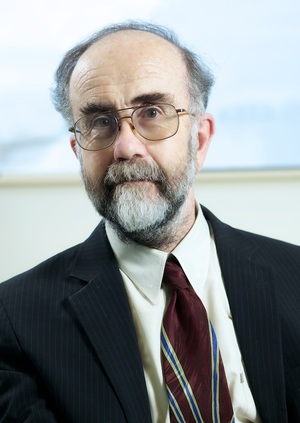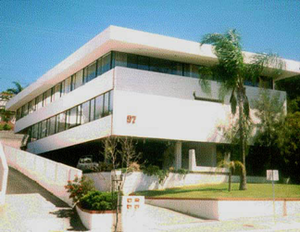A History of Data Analysis Australia
A Personal View
Dr John Henstridge, Managing Director

In 1988 I founded Data Analysis Australia to provide consulting services in statistics and mathematics. At the start the company was myself, working from home, very thankful for the support from my wife and fellow director Cheryl Praeger, and wishing I had a client! But from the beginning my aim was to establish a company that would be much more than myself and would provide a comprehensive service across Australia. In one sense it was an easy goal to set – it was the goal of Siromath, a company set up by CSIRO in 1981 where I first learnt commercial consulting.
Looking back now over the past 30 years I can see that, through the hard work of many people, that aim has been achieved.
1988 was an exciting time for statistics. The revolution of personal computers, something that today we take for granted, was making a small scale statistical consulting company feasible. Having a 14Mhz PC computer with a then massive 40 MB hard disk meant that we could do reasonable types of analysis that were beyond the resources of many clients. In the early days the company emphasised “Statistics Mathematics Software”, since it was often necessary to program some analyses in Fortran. I even recall for one project writing a Fortran program to directly generate Postscript graphics. I had an advantage of many years developing statistical software.
However the first project did not involve any data – it was a statistical modelling of an early underwater communications system. The client benefited by finding out that the capacity of their system was going to be much less than they expected well before they had developed it to a test stage – an illustration of how theoretical analysis can give major practical benefits.
The first years’ growth was not fast. Our vision was to provide high quality services in a commercially viable manner. Learning to run a company took time and we were breaking new ground in many ways. My training as a statistician did not cover accounting and legal issues of business. My caution was justified – Siromath collapsed financially at the end of 1989, removing a competitor but demonstrating that being good statisticians and mathematicians was not enough.
My first employee was a family friend Pia Fogaty, who provided part-time assistance to run the office during 1989. My first full-time employee was Patsy Malone (now Patsy DiPrinzio), who joined as a Consultant Statistician in 1991 immediately after graduating from the University of Western Australia. That was also the year in which we moved into offices at 154 Hampden Road. That began a period of expansion, winning contracts with large clients such as Crown Law and the State Energy Commission.
From the beginning, Data Analysis Australia often collaborated with other consulting firms. One early large project was the Western Australian Travel Survey where we worked with Insight Research between 1989 and 1992. This project began our work in tourism and various forms of travel survey, areas that we continue to work in today. It was at that time that we established links with Economic Research Associates, a company that we shared offices with, first in Hampden Road and now in Broadway. Later on we also invited Economics Consulting Services to share our space. These links led to many joint projects, with the collaborations continuing to today.
In 1990 we took on our first legal matter, acting as an expert witness in a high profile court action between two large insurers where a major point was the validity of survey evidence. Every day during a six week trial, statistical and survey design points were reported daily in the West Australian, something unusual for that paper then as now! Again, this led to a new area of work and now Data Analysis Australia almost always has several active legal projects.

Between 1991 and 1999 Data Analysis Australia grew and took over more and more space at Hampden Road. Eventually the pressure for space meant that we had to move. A building at 97 Broadway became available and we managed to buy it. The building had been designed by noted Perth architect Julius Elischer in 1970 but had grown very tired. It was a great opportunity to create space fitted out for Data Analysis Australia, a light filled environment and work areas that encouraged collaboration. It also provided for the display of the Banksia menziesii paintings by Philippa Nikulinsky and later the glass sculptures of Peter Kovasci, part of giving staff a stimulating environment in which to work. The building is now on the Nedlands Heritage Register.
While some areas of work develop as the opportunity arises, others involve long term planning. In 1995, I identified high quality travel surveys as a potential area of work. I established contacts and started going to workshops. I knew that a large travel survey was likely for Perth, and even allowed for it when fitting out the Broadway offices. We actually won the project in 2002, with a budget of almost $1.5 million over several years. It was hard work, and produced the highest ever quality data for a travel survey in Perth. The Perth and Regions Travel Survey (PARTS) drew upon all our skills in statistics, computing and data management. PARTS remains a travel survey against which others are judged.
Projects like this allowed us to grow. In 1999, Data Analysis Australia had just 10 staff and took up less than half the Broadway building. Today we have 20 staff and utilise over 80% of the building. It is the growing of the staff, both in numbers and experience, where I see the greatest achievements. Data Analysis Australia can proudly say that it has never cut back on staff due to a downturn in work. They are our greatest asset and we work to look after them, with the result that about a third of our staff have been with the company for at least 10 years.
This growth has meant that the structure of Data Analysis Australia has had to grow as well. Since 1994 we have had dedicated IT staff and since 2004 have had a team of senior staff to provide ongoing day-to-day management and staff mentoring. A corporate restructure in 2015 saw the introduction of new titles to better reflect the management side of this team, which has been led by our Principal Managing Consultant, Anna Hayes (Munday), since 2007.
The nature of our work has changed over time. What was challenging with computers in 1988 is now easy, with processing speeds a thousand times faster and storage over one hundred thousand times more plentiful. Statistical software is vastly better so that we rarely have to program at a low level. The term “data analytics”, revolutionary in 1988, is now part of the language. Our work still has challenges of managing data – which seems to grow faster than the means of storing it – but now the questions we are asked are often more strategic in nature. It has been appropriate to change our catch phrase to “Statistics Mathematics Information” and to call ourselves “Strategic Information Consultants”.
However, some things have not changed. When I started the company (or earlier when I left teaching at the University of Western Australia to join Siromath), my vision centred on the belief that the discipline of statistics and mathematics had much to offer our community. Statistics and mathematics provide a toolbox of methods and a way of thinking that can be applied to almost every aspect of our society. Often there is a mindset that these tools can only be applied in the area in which they were developed. However, Data Analysis Australia takes a different approach. By working in many industries and applications, Data Analysis Australia brings this broad experience and a very broad set of tools to every new consulting problem.
It is this statistical and mathematical expertise, and the ability to apply it across many fields, that makes us different from other consultants. While we work with data, we are not a data management or IT company. To reinforce this, Data Analysis Australia has made a point of calling our consultants Statisticians or Mathematicians, rather than labelling them by an area of application.
And it has been fun! Virtually every project is different. Where else could we range from designing a survey on rural electricity in Sri Lanka (ensuring that fieldworkers surveying villages in the south east of that country avoided wild elephants), to looking at size distributions of diamonds, to forecasting water demand, through to modelling queues for public housing?
And it has been rewarding. Data Analysis Australia is respected across the statistical community in Australia and we have clients who keep coming back.
Looking forward, I see Data Analysis Australia continuing to grow, continuing to do good work, and continuing to be a company – the original definition of which is “a group of individuals with a common purpose.” Our common purpose is Making Statistics and Mathematics Relevant.
